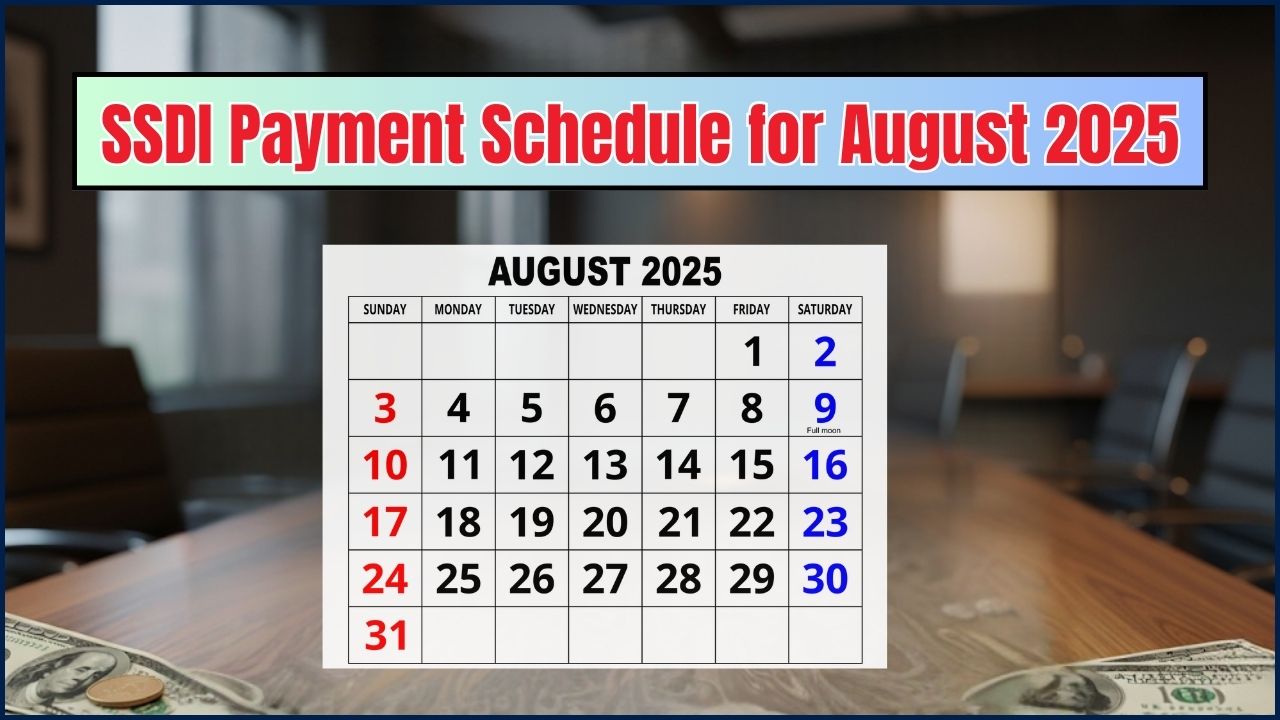
In 2025, Social Security in the United States is facing a crisis. Thousands of people are stranded, struggling to get the help they need, and the phone lines are jammed with no one answering. What’s going on, and how did we get here? In this article, we’ll explore the key issues surrounding the Social Security crisis, why it’s happening, and what steps are being taken to fix it. Whether you’re a Social Security beneficiary or simply concerned about the future of the system, this breakdown will provide you with everything you need to know in an easy-to-understand way.
Social Security in Crisis
| Topic | Details |
|---|---|
| Social Security Call Centers | SSA experiences long wait times (average 93 minutes). Call volume has surged past 10 million monthly. |
| Field Office Strain | SSA has reassigned 1,000 staff to answer phone calls, but field offices are now understaffed. |
| PIN Requirement | New policies, like PIN requirements, have led to confusion, especially among seniors. |
| Investigation and Accountability | Senator Elizabeth Warren has called for an investigation into the wait times and service quality. |
| Recommendations for Improvement | Increase staffing, improve technology, and revise policies to address service gaps. |
The Social Security crisis of 2025 is a serious issue affecting millions of Americans. Long wait times, overwhelmed call centers, and understaffed offices are making it harder than ever for people to get the support they need. While the SSA is working on solutions like increasing staffing and upgrading technology, it’s clear that more needs to be done to restore trust in the system.
For now, beneficiaries should make use of online services, be patient, and consider reaching out to their elected officials for assistance. As we continue to monitor the situation, it’s crucial for ongoing reforms and investments to ensure that Social Security remains a reliable and accessible service for all Americans.
For millions of Americans, Social Security represents a lifeline—a reliable source of income during retirement, after a disability, or in the case of a loved one’s passing. But now, an overwhelmed system is making it harder than ever to get timely support. In fact, thousands of beneficiaries are finding themselves unable to reach the Social Security Administration (SSA) when they need it most. With waiting times stretching over an hour and an overwhelmed phone system, what can you do if you’re facing similar challenges? Let’s break it down.
Why Is Social Security in Crisis?
The crisis at the Social Security Administration has been building for years, but it’s only become more pronounced in recent times. With an aging population, the demand for Social Security services has skyrocketed, yet the system has not kept pace with the increasing need.

In early 2025, SSA call centers were flooded with over 8.6 million calls every month, with a peak of over 10 million in March alone. As a result, many callers are finding themselves waiting hours to speak with a representative—or not getting through at all. This is compounded by the fact that, with so many people trying to reach customer service, many calls are being disconnected.
What’s worse, due to staffing shortages, the SSA has had to pull staff from its field offices to answer the phone lines. This has left local offices understaffed, slowing down the processing of in-person claims and adding to the backlog of pending requests. Now, people who need help face long wait times both on the phone and in person.
How Did We Get Here?
The Social Security system was established in 1935 as a safety net for the elderly, disabled, and survivors of deceased workers. Over the years, it has become one of the most important programs in the U.S., supporting millions of Americans each month. However, as the baby boomer generation enters retirement, the number of people relying on Social Security benefits has grown significantly.
This growing demand has strained the system, especially when combined with the rising number of people applying for disability benefits and other forms of assistance. Unfortunately, while the need for Social Security services has increased, funding and staffing have not kept up, leading to delays, confusion, and frustration.
The Impact on Beneficiaries
For those relying on Social Security for monthly benefits, the delays are not just a minor inconvenience—they can be life-changing. Many seniors and individuals with disabilities depend on their benefits to cover basic living expenses. When delays occur, it can create a ripple effect on their financial stability.
One woman, Joan, a 67-year-old retiree from Minneapolis, recently shared her experience: “I tried calling for weeks. Each time I called, I was put on hold for more than an hour. When I finally got through, they didn’t even have the answers I needed. It’s like they don’t care.”
This is just one example, but there are countless others. Many people report waiting for months to get their claims processed, while others struggle with miscommunication from SSA staff.
How the System Got Overwhelmed
The crux of the problem lies in a combination of factors. For one, the Social Security system was never designed to handle the volume of calls and claims that it’s receiving now. Between baby boomers retiring and the ongoing pandemic-related challenges, the SSA is seeing an influx of people needing assistance, many of whom are not technologically savvy.
Another major factor contributing to the crisis is outdated infrastructure. Many of the SSA’s systems were built decades ago and haven’t kept up with modern demands. The technology simply can’t handle the high volume of calls, leading to call drops, system crashes, and other issues.
In addition, recent policy changes at SSA have only added to the confusion. For example, the introduction of a Personal Identification Number (PIN) requirement for online services led to further frustration, particularly for seniors who may not have access to the internet or aren’t familiar with how these systems work.
Steps SSA Is Taking to Address the Crisis
While the SSA is aware of the crisis, addressing it has proven to be a challenge. Here’s a breakdown of the steps they’ve taken so far—and what they plan to do next:
1. Increasing Staffing
To deal with the surge in call volume, the SSA has reassigned about 1,000 staff members from field offices to help manage phone lines. While this may improve call response times, it’s only a temporary solution. Many field offices are already stretched thin, and this staffing shift has led to delays in processing claims.
2. Technology Upgrades
In an effort to streamline the system, SSA is exploring ways to modernize its technology. This includes improving their call center infrastructure, upgrading online services, and implementing more automated systems to handle routine inquiries. The goal is to reduce wait times and make services more efficient.
3. Policy Revisions
Recognizing the burden that recent policy changes have placed on beneficiaries, SSA has made it clear that the use of the Personal Identification Number (PIN) is entirely optional. This clarification was made in response to criticism from advocacy groups, particularly AARP, who argued that the new policies were disproportionately affecting seniors.
4. Investigation and Accountability
Senator Elizabeth Warren has called for an investigation into SSA’s practices, highlighting discrepancies between reported wait times and actual customer experiences. The hope is that increased transparency and accountability will help improve the system’s efficiency and responsiveness.
What Can You Do as a Social Security Beneficiary?
If you’re trying to navigate the current crisis, here are some practical tips to help you get the assistance you need:
1. Try Online Services First
While phone lines are overwhelmed, SSA’s website and online services can be a useful tool for handling many basic tasks. You can apply for benefits, check your status, and even change your address without needing to wait on hold.
2. Use the Callback Feature
If you can’t get through to a representative, use SSA’s callback feature. This allows you to schedule a time for someone to call you back, which can help reduce wait times.
3. Be Patient
Unfortunately, long wait times and delays are becoming more common. Be patient, and if you can, prepare any necessary paperwork in advance so you’re ready when you finally get through to someone.
4. Reach Out to Your Senator
If you’ve been waiting for an extended period and have hit a dead end, consider reaching out to your local senator. Senators like Elizabeth Warren are calling attention to the problems with SSA and pushing for investigations. Your voice may help bring about the change that’s needed.
Global Perspective: Social Security Around the World
Interestingly, the challenges faced by the U.S. Social Security system are not unique. Other countries with similar safety nets have faced their own struggles with overwhelming demand and outdated infrastructure. For example, Canada’s public pension system, the Canada Pension Plan (CPP), has experienced delays in processing claims due to similar factors.
However, some countries are already making strides to modernize their systems. The United Kingdom, for example, has been investing heavily in digital infrastructure, allowing more people to manage their benefits online. Perhaps the U.S. can look to these international examples for ideas on how to improve its own system.




